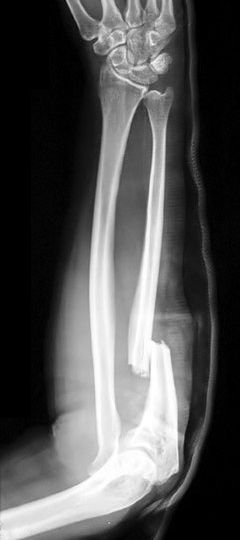
So your doctor’s just informed you you’ve sustained a forearm fracture. Congratulations – you’re probably in quite a lot of pain. The thought of breaking your arm isn’t something most people take to particularly well. Breaks and fractures alike are painful, disorientating experiences, and the truth is you just don’t tend to get them unless you’ve had a bad fall or accident, as well.
But what is a forearm fracture? If you’re not a medical professional, you might not know enough just from pop culture to know what to expect. What subcategories these breaks fall into. And, if you’re a parent and your child, like many children, falls into a statistically higher percentage of people likely to sustain a fracture, how these work and what to expect.
Join us, today, as we take a closer look at your forearms, how and why they break, and what to expect when your son or daughter brings home a forearm fracture of their very own.
What Is A Forearm Fracture?
When it comes to the painful topic of bone breaks in children and adults alike, forearm fractures are among the most common. And that makes a lot of sense if you consider the bone in question: the forearm is the part of the arm we engage most commonly in everyday activities. Used in everyday activities, sports and hobbies, and, perhaps more importantly, to slow the force of a fall.
The bones in your forearm bones are referred to as the ulna and the radius. They run parallel to each other, connecting at the distal wrist joint and the elbow or proximal joint. A break or fracture in these bones is both painful and, often, debilitating.
Forearm fractures can affect either or both forearm bones, and the impact of one into the other often collides the two, causing both to break. When one of these fractures occurs, the break category can be closely assessed using either physical examination or an x-ray. These categories identify the break as either involving the proximal, middle or distal shaft of the bone.
Common forearm fracture varieties include:
- Radial Head Fractures
- Olecranon Fractures
- Distal Radius Fractures
- Radial and Ulnar Shaft Fractures
These fractures are identified, based on the criteria and bone location. In cases where the radius and ulna are both affected, this is known as a “both bone forearm fracture.” As mentioned in previous articles, where fractures do not pierce the skin, they are considered a simple fracture. When they pierce through the skin, this is considered a complex or open fracture.
Children and Forearm Fractures
Childhood is a time for fractures like the holidays are time for relaxing. Distal or wrist-end radial fractures are an extremely common byproduct of heavy play, accidents, and even standard sports practices.
Fractures can be further classified by the area of the bone affected, its stability, the cleanliness of the break and whether it is partial or complete. These classifications include:
- Torus fractures, or “buckle” fractures. This occurs when the top layer of a bone on one side compresses following a sudden, heavy impact. They are considered stable.
- Metaphyseal fractures. These fractures can affect the upper or lower shafts of bones but do not affect their growth plate.
- Greenstick fracture. Fractures of this type extend through part of the bone, bending on the opposite side.
- Galeazzi fracture. Impacts like this are typically some sort of displaced fracture, disrupting the radius and the wrist joint where the radius and ulna join at the wrist.
- Monteggia fracture. Typically involving the ulna shaft while disrupting the elbow joint, this fracture occurs where the radius dislocates.
- Growth plate fracture. These fractures travel across the growth plate.
TOBY Orthopaedics is a leading supplier of orthopaedic implants for flexor tendon repair, proximal humerus, and long bone fractures. Get in touch with us to find out more about our amazing product line, today!

